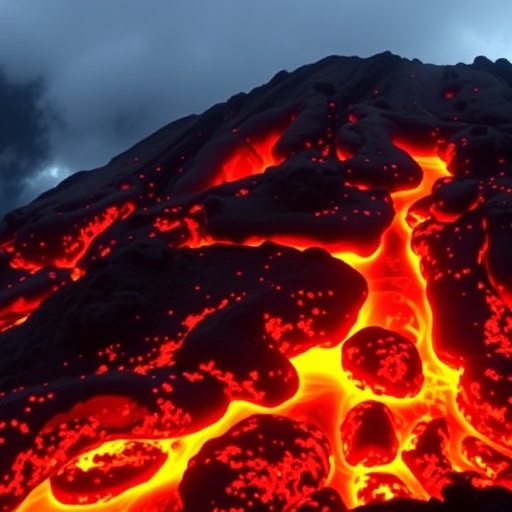In recent years, the interaction between coal and atmospheric conditions has garnered significant academic interest, particularly regarding how coal behaves under hydration reactions. A groundbreaking study led by Xu, J., Liu, H., and Qian, S. delves into the mechanical response of coal subjected to hydration in a carbon dioxide-rich atmosphere. The importance of understanding these interactions cannot be overstated, especially as society seeks to balance energy needs with environmental concerns.
The primary focus of this research is to analyze the complex mechanics of coal when exposed to moisture and elevated levels of carbon dioxide. The study reveals how these conditions affect the physical properties of coal, which in turn has broad implications for mining, energy production, and carbon sequestration strategies. The authors utilize advanced experimental methodologies to explore the structural integrity of coal samples across different hydration levels and CO2 concentrations.
At the heart of the investigation lies the hydration reaction of coal, a process that can be significantly altered in the presence of carbon dioxide. The authors found that as coal absorbs moisture, it exhibits notable changes in its mechanical properties, including strength, elasticity, and fracture toughness. These alterations are critical as they highlight how the intrinsic characteristics of coal shift when confronted with environmental changes, specifically increased humidity and elevated CO2 levels.
The significance of these findings extends beyond academic interest. It poses essential questions for industries that rely on coal, as understanding the material’s response to such atmospheric conditions could influence operational strategies. For example, coal’s altering mechanical properties may affect its handling and processing techniques, which are essential for ensuring efficiency and safety during extraction and utilization.
Furthermore, the research sheds light on the damage mechanisms that coal undergoes under hydration. This aspect of the study unveils the microstructural disruptions caused by moisture infiltration, which leads to the gradual degradation of coal integrity over time. The authors employ sophisticated imaging techniques to capture these changes at a microscale, painting a vivid picture of how hydration can ultimately compromise coal’s suitability for energy production.
In another important revelation, the impact of CO2 on the hydration of coal is underscored through a variety of experimental setups. The study provides compelling evidence that CO2 concentrations not only affect the rate of hydration but also play a pivotal role in the chemical reactions that occur within coal. This nuanced relationship presents fresh insights into how environmental factors can drive changes in one of the world’s most significant fossil fuels.
Moreover, this research may provide a foundation for future investigations aimed at mitigating the adverse effects of coal utilization. With the continuing awareness surrounding climate change and environmental safety, the mechanical analysis of coal under CO2 conditions can help inform cleaner extraction and usage practices. By understanding how to manage coal’s properties better, industry professionals can work toward minimizing greenhouse gas emissions while optimizing energy output.
As the global energy landscape evolves towards a more sustainable future, studies like this become increasingly relevant. Xu, Liu, and Qian’s work serves as a pivotal reference for future research, setting the stage for continual exploration into the mechanical behavior of coal. Such diligence not only aids in comprehending past behaviors but also enhances predictive models related to coal performance in diverse environmental conditions.
Academically, the research also contributes to the broader discourse surrounding coal’s role in a carbon-constrained world. As international policies and regulations shift towards lowering carbon footprints, understanding the fundamental mechanical responses of coal becomes essential for strategizing its use or replacement with alternative energy sources. The insights from this study offer valuable data that can influence both academic inquiry and pragmatic applications in energy management.
Furthermore, this work begs a closer examination of how coal’s fluid-mechanical behavior might change as environmental conditions continue to fluctuate due to climate change. Continuous monitoring and understanding of these changes will be critical in responsive policymaking and technological advancements.
Overall, the comprehensive nature of this research places it at the forefront of current energy discourse. The authors adeptly navigate the complexities involved in studying coal’s hydration mechanisms among varying CO2 concentrations. Their findings not only augment scientific knowledge but also directly impact energy industries that must adapt to changing environmental regulations.
In conclusion, Xu et al.’s study highlights the intricate interplay between coal’s mechanical properties and atmospheric conditions, underscoring the need for informed approaches to coal extraction and utilization. The advancements revealed through this research point towards a future where energy practices are more harmonized with ecological imperatives, balancing both energy needs and environmental health.
Subject of Research: Mechanical Response and Damage Mechanism of Coals Under Hydration Reaction in CO2 Atmosphere
Article Title: Mechanical Response and Damage Mechanism of Coals Under the Hydration Reaction in the Atmosphere of CO2.
Article References:
Xu, J., Liu, H., Qian, S. et al. Mechanical Response and Damage Mechanism of Coals Under the Hydration Reaction in the Atmosphere of CO2.
Nat Resour Res (2025). https://doi.org/10.1007/s11053-025-10533-7
Image Credits: AI Generated
DOI: 10.1007/s11053-025-10533-7
Keywords: Coal, Hydration Reaction, Carbon Dioxide, Mechanical Properties, Energy Production, Damage Mechanism




